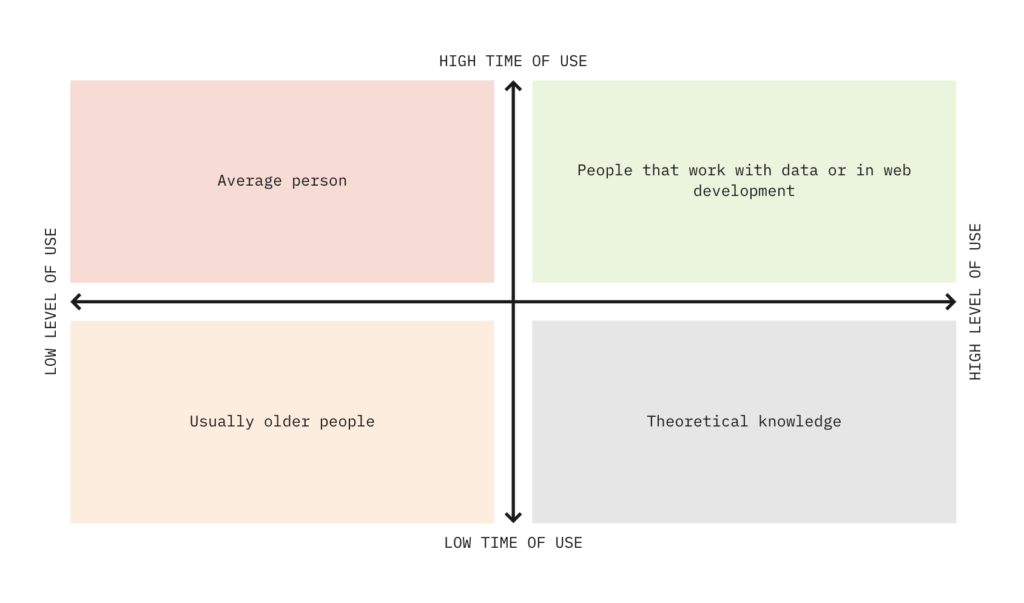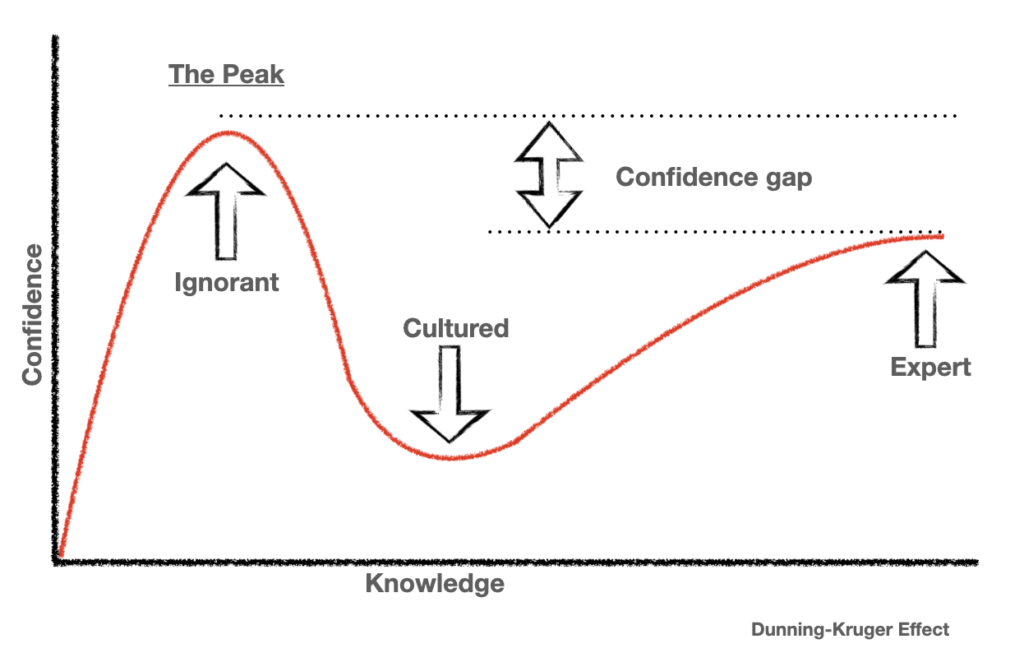¡Happy New Year 2022!
Finally I was able to take advantage of the Christmas holidays to make use of my close circle for conducting a few interviews with the end users. Perhaps it is not the best methodology, since we have no specific product to develop, but I have focused it as a continuation to deepen and test the initial results of the survey type test that I showed in the previous post. I hope that the results of the research can be extended in this way.
Having as a public any user of the network, I have tried to establish two key parameters when selecting different profiles for interviews:
– Level of use
Here I divided people who design, program, or work with sensitive data. In general, those who are not only users, but are also part of the structure that handle data. On the other hand, we have those who are only passive users of this type of service.
– Time of use
For this one I made a simple division between people who are most exposed to the internet and spend more time per day on a screen, so they are accustomed to read and understand the architecture of a web, as well as react agilely to pop-up and visual inputs. And with those who spend less time than average at day or week in front of the desk or with a mobile device.
This division seemed to me more accurate and efficient to establish a demographic categorization by age, gender or studies; since they are factors that I think relate directly to the user’s response to the cookie window.

Understanding the division and choosing at least one person to cover each quadrant to be able to cover all combinations, I planned the interview script as follows:
- Introduction in which the person presents himself and recounts his or her living situation: studies and career.
Examples of questions: how old are you? what are you doing with your life? do you study? do you work? In what?
2. Relationship to technology, time of use.
Examples of questions: Do you get along with computers? Do you work with computers? Do you use computers in your day to day? Do you think you are dependent on mobile? Do you think you could stop using it if you wanted to?
3. Feelings/beliefs regarding the issue of data security and cookies
Examples of questions: Do you feel sure leaving your data on the net? Are you afraid of what they might know about you/do with them? What do you feel when an ad appears about something you’ve said, previously searched for? Do you do anything to avoid giving out your data? Do you mind being asked about your data or consent?
4. Specific question about the design of the cookie window and/or your rights as a user.
Examples of questions: What choice of days when you get the cookie question? Do you know if you can ask a platform to delete your data?
Conclusions
I do not plann to make public the literal transcript of each of the interviews, only to highlight the differences or surprises I have had when analyzing the users answers to each question and sharing it. In general, all the answers were similar to the majority percentages of the test type, they worry about the use of their data for purposes you do not know; but nevertheless they do not hesitate to accept without reviewing the conditions of each website in relation to data protection.
There were some comments that were repeated and that had not been included in the previous test questionnaire as the recognition by the average user that their data is given as payment to access internet content free of charge. For example, YouTube ads in their videos annoy them, but as they are given the option to pay to access the content without advertising interruptions, they accept better to watch the add. It seems that this fact is related in the mind of the user in the same way by changing the advertising vision by its data transfer to advertise its profile; that is, as a transaction in which the user, the advertisers and the owners of the website participate. Thus, they give their data when they believe that the product they access (the website) cannot be given to them if they do not give something.
Another interesting behavior is that most users understand that their data can serve as specific advertising purposes in their profile, many recognize that after searching for a product in the network appear ads of this same product. However, they consider that it does not affect them, that is, that the belief of knowing the functioning makes them assume that they will not be affected by the ad, that it will not achieve its purpose because they are not sensitive to it.
It seems a dangerous belief and also a false one, the fact of knowing how something works does not exempt you from being affected. And, in fact, it makes you more likely to be fulfilled without you noticing as you reflex less about it (Dunning-Kruger effect). It is also a false way of thinking since they only believe they know what it is, but only relate them to a known and partial part of the uses that can be given to their data. This does not seem to affect the user who is in the top right quartet, that is to say those who work with data, who are also the only ones who correctly answer questions about their data rights. This type of user understands that he is permanently exposed to this type of manipulation and tends to protect more which websites access part of his data.

As final information-pill, some users claim to try to “confuse” the algorithm by subscribing to product websites that would never look for or searching for items that they do not need so that the profile they have of this does not resemble reality.
What do you think of this trial?
Thank you very much for reading me, see you in the next post where we will see negative examples (dark patterns) of cookie window.
References:
- Designing for the digital age by Kim Goodwin